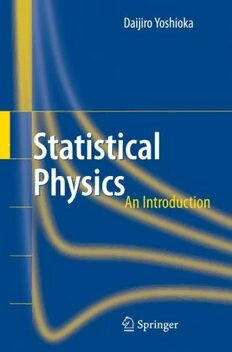
Statistical Physics An Introduction PDF
206 Pages·2006·1.376 MB·English
Most books are stored in the elastic cloud where traffic is expensive. For this reason, we have a limit on daily download.
Preview Statistical Physics An Introduction
Description:
A macroscopic system consists of a tremendous number of microscopic atoms and molecules. In thermal equilibrium the state of such a system is uniquely defined, despite the fact that the microscopic particles behave quite randomly. This observation gives rise to the fundamental law of the statistical physics; it allows entropy to be defined and a framework for the theory to be constructed but cannot be derived form quantum mechanics or force laws. Introduction to Statistical Physics seeks to explain the laws of the macroscopic level to undergraduate students learning them for the first time. The first part of this book explains the essence of statistical physics without going into details such as Liouville’s theorem or ergodic theorem, which are difficult for beginners and unnecessary for actual application of the statistical mechanics. In the second part, statistical mechanics ?s applied to various systems which look different but have the same mathematical structure, in particular, features applications to quantum dynamics, thermodynamics, Ising model and statistical dynamics of free spins. Advanced topics in phase transitions and dense gases conclude the text, plus helpful appendices.
See more
The list of books you might like
Most books are stored in the elastic cloud where traffic is expensive. For this reason, we have a limit on daily download.
